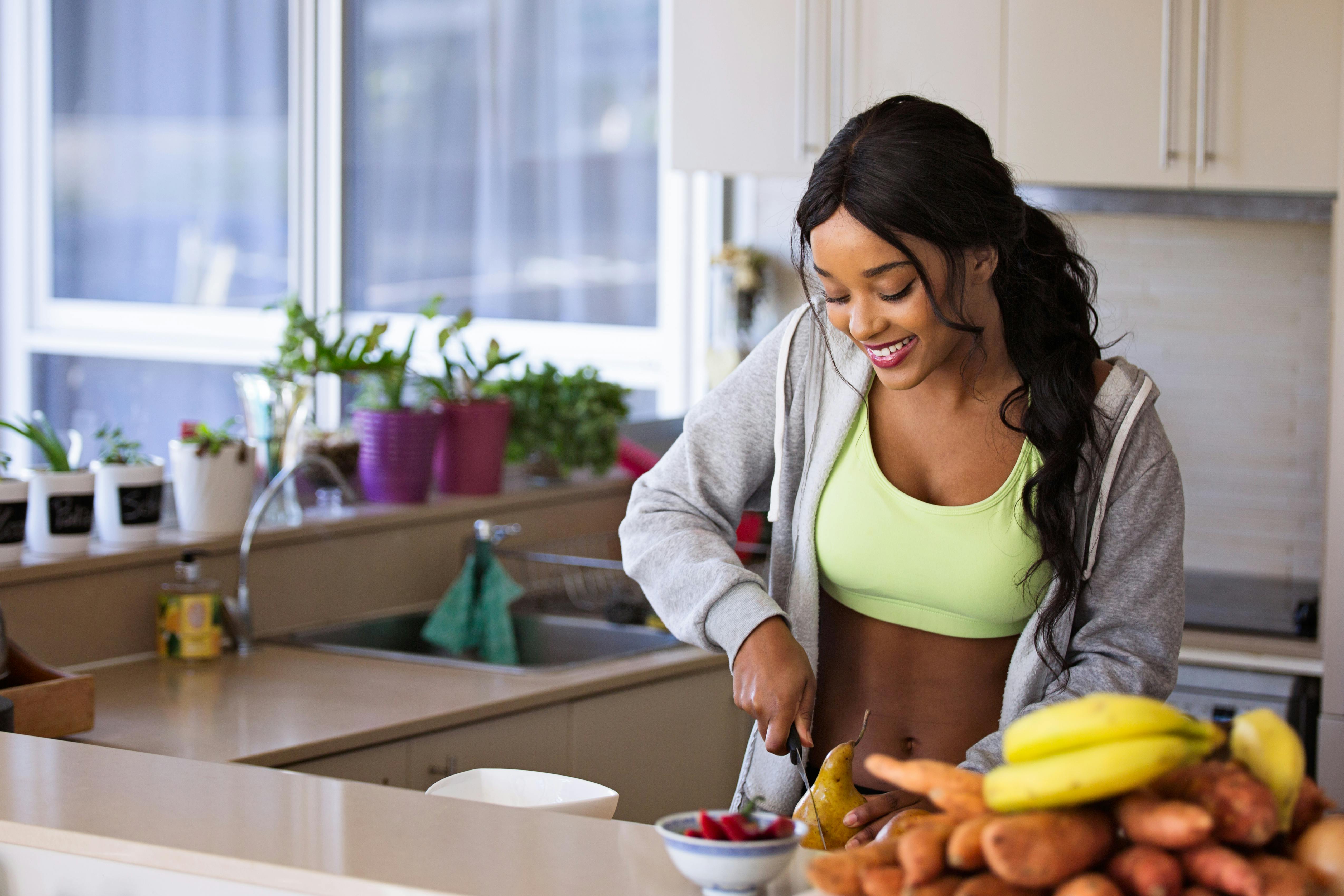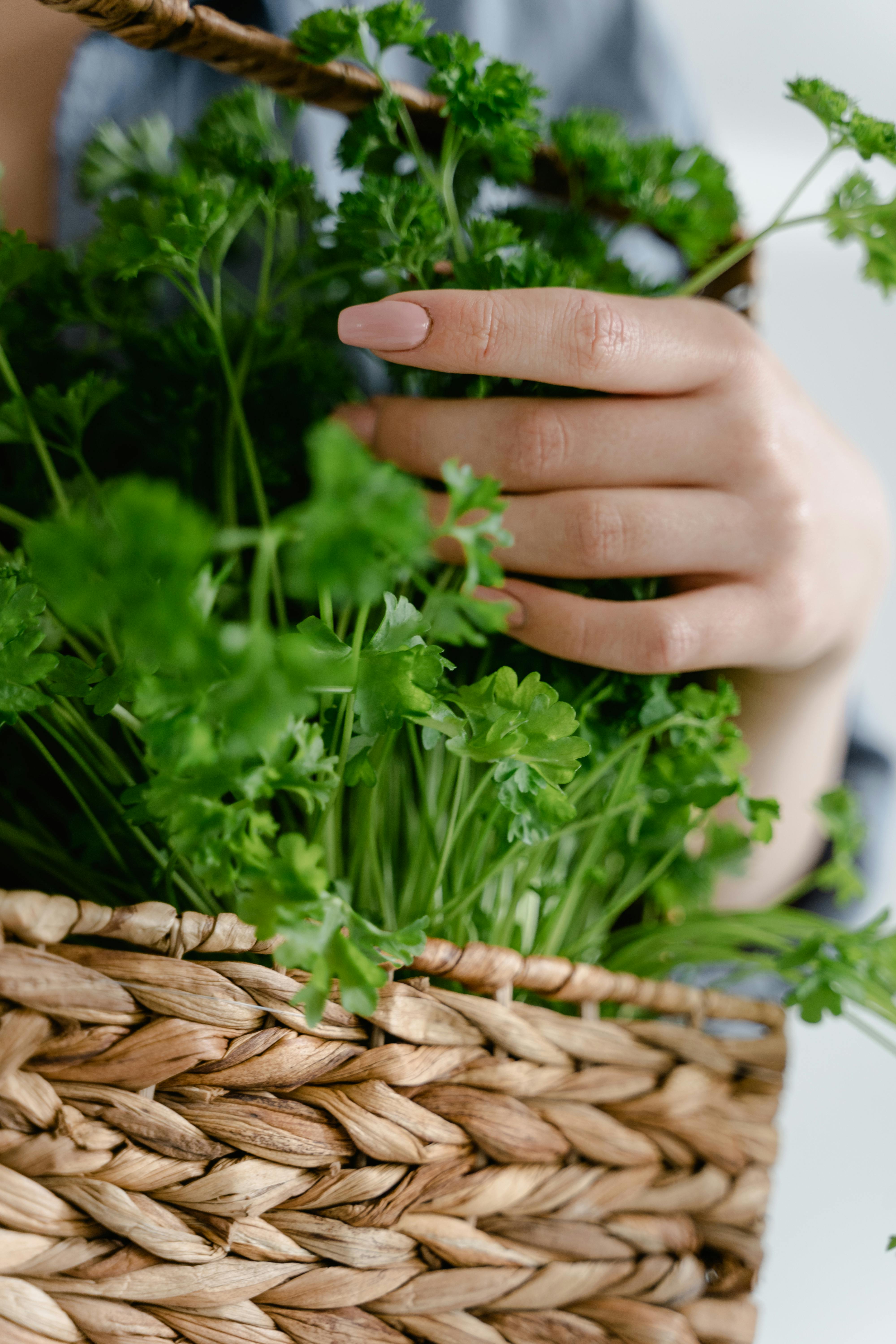Easy Healthy Cooking in Panama: Real Habits for Busy Home Chefs
Funny thing is, when I first set foot in Panama some years back, the last thing I expected to learn was just how effortlessly locals merged health, speed, and flavor in their home kitchens. Back in the day, my approach to “healthy cooking” was more like: prep for hours, measure every gram, and hope my family didn’t notice the lack of butter. Yet, in Panama, the daily rhythm is different—real people whip up everyday meals packed with nutrients without sacrificing time or taste. Ever wonder how busy home chefs make it happen? This guide is my authentic, tested answer for how you (yes, you!) can achieve simple, healthy, and utterly delicious cooking habits, tailored specifically for Panama but transferable to nearly any kitchen where time and energy are always limited.
I used to make the mistake of overcomplicating healthy eating—complex recipes, superfoods galore, and frankly, a lot of culinary guilt. Honestly, what really strikes me each time I work with local Panamanian families—and it’s become a personal passion since 2020—is how wellness is often baked into routines, not forced through extremes. This post isn’t some generic “10 ways to eat better” fluff; it’s a living, step-by-step resource rooted in cultural wisdom, research-backed advice1, and my own kitchen blunders and breakthroughs. Let’s get into the real, the practical, and the delicious.
Why Healthy Cooking Feels Hard (But Isn’t)
Ever notice how “healthy cooking” gets painted as this relentlessly difficult pursuit—sacrificing flavor, endless chopping, sour faces at the dinner table? This myth’s pretty widespread, and to be honest, I used to fall for it too. What I’ve consistently found, though, is most home chefs (whether in Panama, the US, or Europe) actually stay stuck because they believe healthy eating means more time, more money, more rules. Sound familiar?
Here’s the twist: studies show that the #1 obstacle for home cooks isn’t knowledge or access—it’s perceived complexity and fear of “bad results”2. Plus, people associate healthy recipes with blandness. Let me clarify: healthy cooking is not about removing joy or rushing bland food onto the plate. In Panama, traditional meals like sancocho (herbed stew) or arroz con guandú (rice with pigeon peas) prove you don’t need to abandon flavor for wellness3. Actually, you get the opposite: vibrant taste, clean nutrition, and meals that fit into real schedules.
关键洞察
I’ll be completely honest—I wasted years expecting that “healthy” = expensive, hard, or time-consuming. Panama’s easygoing, ingredient-driven kitchen culture taught me: healthy routines stick when they’re built on small, repeatable habits—not big, complicated overhauls.
Panama’s Food Habits: Fast, Nutritious, Local
So, what’s unique about Panama’s approach? One, most ingredients are seasonal and locally sourced (and yes, you can mimic this even if you don’t live in Panama). Two, meal structure favors one-pot dishes, balanced plates, and naturally vegetable-forward sequences. Three, recipes are adapted for busy schedules—the average working family spends less than 40 minutes prepping dinner but gets a full spectrum of vitamins, minerals, protein, and flavor4.
In my experience, watching a Panamanian grandmother whip up breakfast for ten in thirty minutes is a pure lesson in efficiency. Here’s what gets me: she doesn’t measure obsessively, she just knows how to layer flavor and use what’s available.
- Prioritize fresh produce and root vegetables: think yucca, plantain, carrots.
- Limit heavy sauces—use natural herbs and spices as the flavor base.
- Mix quick proteins (eggs, fish, chicken) with staples like rice or cornmeal.
- Include something green with every meal (even a handful of spinach or culantro).
- Prep with minimal fuss: chop, toss, simmer. That’s it.
Five Simple Habits Every Busy Cook Can Master
- Batch-prep vegetables once weekly for quick access.
- Rotate mains: choose three quick proteins, switch each night.
- Choose one-pan meals: minimize clean-up, maximize nutrients.
- Keep a core spice blend handy—Panamanian cooks use culantro, garlic, oregano.
- Embrace leftovers as part of the weekly plan, not accidental waste.
Each of these is backed by nutrition research5 and everyday practice. Here’s where I get passionate: you do 不是 need a “perfect system.” Repeatable, simple routines trump complicated programs every time.
Country Fact: Panama’s Seasonal Eating
Realistic Tips for Beginners
If you’re just starting out, the journey feels rocky. Let me be real: my own first attempts at healthy “one pan” meals resulted in plenty of burnt onions and soggy rice. Here’s what actually works for beginners:
- Choose five “default” dishes that rotate weekly—build confidence first.
- Prep fresh produce ahead, but keep frozen veggies on hand for emergencies.
- Learn to make Panamanian sofrito (herb blend) as your foundation.
- Don’t obsess over measurements; focus on ratios and seasoning to taste.
The more I consider this, the more I realize that flexibility beats rigidity. On second thought, maybe “healthy cooking” is just knowing how to adapt.
Cultural Spotlight: Cooking with Purpose
Every culture defines health a bit differently. In Panama, it’s less “eat only salad, skip dessert” and more about community, mindful sourcing, and practical kitchen wisdom. Meals connect families, respect time, and nurture both body and spirit. This guides every section moving forward—with real stories, data, and case studies.
Panama’s Weekly Meal Planning: How Real Families Do It
Having spent a fair bit of time researching Panamanian home routines (and living with extended families in Chiriquí province), I’ve witnessed meal planning that is both intentional and, frankly, refreshingly human. What really strikes me is the utter lack of pretension—it’s always grounded in what’s fresh, affordable, and easy to cook on short notice.
关键要点
If you want to eat healthy in Panama (or anywhere), plan your meals around local seasons and staple ingredients, not influencer “meal prep” fads.
Here’s a sample weekly dinner rotation I’ve seen work brilliantly for busy home chefs:
| 天 | Main Dish | Vegetable Side | Flavor Boost |
|---|---|---|---|
| 周一 | Grilled Fish | Steamed Yucca | Culantro-Lime Salsa |
| 周二 | Chicken Sancocho | Carrots & Squash | Aji Chombo Hot Sauce |
| 周三 | Veggie Rice | Sweet Plantain | Pickled Red Onion |
| 周四 | Egg & Tomato Tortilla | Greens | Fresh Salsa |
| 星期五 | Pork with Pineapple | Avocado Salad | Cilantro |
Notice how the rotation embodies flexibility—proteins change based on price and availability. No rigid calorie counts, just nutritional balance. From my perspective, this kind of casual structure makes healthy cooking “automatic.”
Batch-Prep Techniques: Maximum Nutrition, Minimum Effort
Batch-prepping is the overlooked superpower of the busy home chef. Here’s how I do it—and how Panamanian cooks have quietly mastered this art for generations:
- Wash and chop three veggies (onion, carrot, green pepper) on Sunday.
- Make a double batch of sofrito—freeze half for midweek flavor.
- Grill or poach 3 portions of chicken/fish; keep chilled for fast lunches.
- Prepare rice or yucca in bulk.
- Roast roots (sweet potato, beet) and store for salad additions.
Batch-Prep Rules
- Always label containers by date—don’t let old veggies sabotage your meal.
- Embrace imperfect presentation; flavor matters more than looks.
- Set a timer—no batch session should exceed 90 minutes.
On second thought, the less you micromanage, the more you actually get done. I remember when keeping things “pretty” used to stress me out. Now, I just focus on variety and freshness—and everyone eats better as a result.
Literally Healthy: Evidence-Based Ingredient Choices
This is where we deal with nutritional facts and research-backed choices. Panamanian diets aren’t perfect (sugared drinks and fried snacks abound in the city), but rural regions shine for their use of vitamin-rich foods:
| 成分 | Key Nutrients | Top Seasonal Months | Quick Use Tip |
|---|---|---|---|
| Yucca | Vitamin C, Potassium | 五月至十月 | Boil, Mash or Fry |
| 芭蕉 | Vitamin A, Fiber | 全年 | Bake or Pan-Fry |
| Papaya | Vitamin C, Folate | March-August | Chop for Salad or Dessert |
| Culantro | Iron, Vitamins A & C | December-June | Blend as Base |
What’s brilliant about this system is how flavor and nutrition fit together naturally. According to government dietary reports6, these staples consistently lower chronic disease risk when used as part of weekly rotation—not in isolated “superfood” meals.
Expert Voices: What Really Works
“A meal doesn’t have to be complicated to be nourishing. Find your staples, learn how to season them, and repeat.”
In my experience, Chef Ariana’s advice reflects everyday wisdom. The more I talk with experts, the more it becomes clear that habit—and a willingness to adapt to seasonal change—is the real key.
“I always encourage home cooks to choose local ingredients first—then build your meal around what’s fresh. This reduces stress and improves nutrition by default.”
The jury’s still out for me on whether strict nutritional tracking beats intuitive cooking. Based on my years doing this, I lean toward the “healthy habits, not rigid rules” side.
Common Mistakes (and How to Dodge Them)
- Trying too many new techniques at once—stick to two “experiments” per week.
- Buying perishable produce and forgetting to actually use it—plan ahead.
- Letting leftovers turn into “science experiments”—embrace planned overs.
- Skipping seasoning—healthy doesn’t mean bland.
- Comparing your results to picture-perfect Instagram meals—real food looks real.
Let me step back for a moment—these mistakes aren’t unique to Panama. They happen everywhere, and each one’s fixable by returning to the core routine: plan, prep, season, taste, adjust.
Thoughtful Questions to Guide Your Week
- Which three ingredients seem freshest at my market this week?
- How many meals can I cook with those before they spoil?
- Which “short-cut” (frozen, canned) actually tastes good and saves time?
- How can I turn a leftover into tomorrow’s lunch?
Pause here and think about your answers. What you realize might change your weekly plan entirely. I know it changed mine.

Effortless Flavor in Healthy Panamanian Cooking
Let’s be honest—no one sticks with “healthy” if it tastes grim or complicated. The brilliant part about Panamanian cuisine is how deeply it relies on natural flavor boosters that also pack nutritional value. My early attempts at healthy cooking? Overused garlic and disregarded herbs completely. What a difference it makes to learn local tricks.
Flavor Builder’s Checklist
- Always use a base of onion, garlic, and culantro.
- Add a squeeze of local citrus—lime or bitter orange—at the end.
- Toast spices before adding them to build aroma.
- Simmer soups and stews with fresh roots for depth.
- Finish with raw herbs or chopped veggies to layer texture.
The more I consider this, the more I realise that flavor is the partner of health, not its enemy. And honestly, I regret years spent fearing fat, salt, or a pinch of local sugar—balance always wins.
Sustainable Habits for Busy Schedules
This is where Panama’s “one-pot” approach shines. According to recent surveys7, the average home cook spends just 25% of their meal time actively cooking—the rest is hands-off simmering or baking. And guess what? This method preserves nutrients, saves energy, and lets you multitask.
| 方法 | Time Active | Nutrient Retention | 最适合 |
|---|---|---|---|
| Stewing (Sancocho) | 10 min | High (vegetables, protein) | Weeknight Dinners |
| Roasting | 8 min | Very High (roots, squash) | Batch-Prep |
| Quick Sauté | 6 min | 中高 | Last-Minute Lunch |
From my mentor (who swears by slow-cooked guandú rice), I learned: always choose a process that lets you pause without burning dinner. Letting the food do the work, rather than your hands, is where most home cooks finally get relief.
Cultural Case Study: Sancocho as a Wellness Routine
“Making sancocho together on Sunday is our family’s health insurance. We share, slow down, and eat meals with meaning.”
I used to think “soup night” was lazy cooking. Actually, it’s one of the healthiest routines I’ve observed: packed with root veg, lean chicken, and fresh herbs, plus unbeatable comfort. The more families I’ve met across provinces, the clearer it gets—mealtime intention matters as much as the ingredients themselves.
Health Hack
If you want meals that “just work,” make soup your weekly go-to—not only does it save money, but you avoid the trap of unhealthy snacks and skipped dinners.
Healthy Cooking Myths: Busting the Biggest Barriers
- “Healthy means bland.” False! Local spices and quick salsas prove otherwise.
- “I need a lot of money.” Actually, you don’t—seasonal produce saves cash.
- “Meals must be perfect.” Imperfection builds confidence; looks aren’t health.
- “Kids won’t eat vegetables.” Blend roots into rice, or serve with sweet plantain.
- “Cooking takes too long.” One-pot, hands-off techniques are game-changing.
Anyone who’s been there knows: busting these myths feels empowering. What I should have mentioned first is, no one starts out an expert. If you stumble, you’re in the right company.
Social Sharing: Building Your Healthy Cooking Community
Quick Fixes for When You’re Out of Time or Ingredients
- Use frozen veggies for stir-fry or soup if needed—quality is surprisingly strong.
- Blend leftover rice with eggs, herbs, and cheese for instant tortilla.
- Substitute canned beans for meat in “rush hour” dinners.
- Make salsa or salad with whatever’s left in the crisper—don’t overthink.
The result? A meal that feels homey, nourishing, and efficient—even when life goes bonkers. I’m still learning ways to simplify without compromise, and local cooks always surprise me with new tricks.
Accessible Cooking for All: Health Equity & Local Wisdom
Peer groups in Panama often cook for children, elders, and folks with dietary restrictions. I’ve worked with nutrition educators who argue health can be achieved affordably: use local roots for complex carbs, fish for lean protein, and herbs for immune support8. No special supplements or imported ingredients required.
“Home kitchens are the front line of public health. Cooking with purpose is more powerful than expensive nutrition plans.”
Honestly, I reckon teaching kids how to prep root vegetables does more for their future health than any “eat more kale” campaign.
行动步骤
Set one weekly family cooking night—rotate dishes, swap stories, and teach simple habits that stick across generations.
Progress Tracking: How to See Real Change
Sometimes you want proof your new habits are working. That’s natural! I suggest a simple checklist—no calorie counting, just tangible results. Here’s my current version:
- Did I eat three different vegetables every day last week?
- Did I batch-prep at least twice?
- How many meals included local roots or grains?
- Were there leftovers used creatively?
- Do I feel less “meal-time stress” now?
Take a second to consider your answers. Change isn’t instant—but these signals show you’re on the right track.
Summing Up: Panama’s Healthy Kitchen in Your Everyday Life
Let me think about this—what makes these habits “stick” for real? It isn’t magic, or genetic advantage, or some secret sauce. It’s the willingness to repeat, adjust, share, and enjoy meals (even the wonky ones). Panama’s clear guide for busy chefs is this: embrace imperfection, lean into local wisdom, and never let “healthy” become a chore or source of guilt.
I go back and forth on whether routines or flexibility matter more. Nowadays, I settle for structure plus improvisation: keep your familiar favorites, but always let curiosity drive you toward new ingredients and flavors.
Your Home Chef Action Plan
- Choose three quick, healthy recipes to master this month.
- Batch-prep once weekly using Panama’s most nutritious ingredients.
- Rotate local produce in your meal plan—watch for seasonal sales.
- Host a family “soup night” with root vegetables, herbs, and lean protein.
- Share your progress—community helps routines become habit.
On second thought, don’t chase “perfect.” Enjoy the process, and forgive the burnt bits—everyone starts somewhere. What matters is showing up in your kitchen, again and again.
Reflect: What’s Your Healthy Kitchen Story?
Where do you find inspiration for healthy eating? Is it family recipes, the neighborhood market, or some panicked weeknight when you realize “I need to do better”? For me, it’s the local grandmothers—their hands, their stories, their willingness to improvise.
行动呼吁
Start now: Pick one simple Panamanian habit—maybe seasonal produce, maybe a one-pot soup—and make it part of next week’s rotation. Then share what you learned. Failures and photos encouraged!
Future-Proofing & Content Repurposing
- Extract weekly meal table for social media “planning tips.”
- Turn expert quotes into Instagram quote cards.
- Build an infographic of seasonal produce cycles.
- Adapt the “mistakes list” as a community quiz or discussion prompt.
- Convert progress tracking steps into a mini email series or printable checklist.
Repurposing is easy—just keep the focus practical and authentic. The evolving seasons, new ingredients, and changing routines mean you can adapt and update this guide for years.
参考
来源和参考文献



